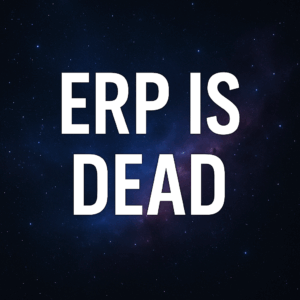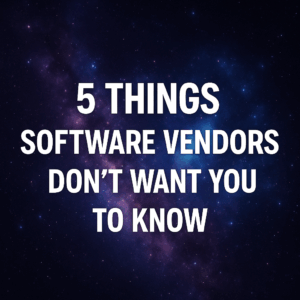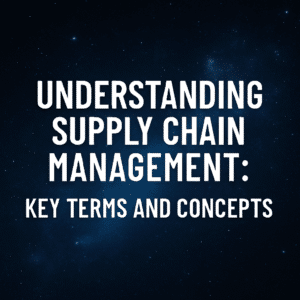Table of Contents
ToggleBy Stuart Robb, Maddison Ward Limited
Shall I tell you a secret? A big digital transformation trade secret… Whilst all the consultancy firms will bombard you with their papers on the top 6, the top 10, the top 15, and the top 61 reasons why ERP programs fail, the truth is that there is only one.
Here it is. “Digital transformations are difficult, and a lot of things can go wrong. “
In fact, everything can go wrong: from the start, including over-ambition, unrealistic timescales and budgets, and poorly understood business needs. To finish, including inadequate testing, lack of transitional planning, lack of understanding around the impact of people or process change, and learning deprecation. The list is endless. Indeed, white papers and internet articles claiming to hold the key to ERP success are as common as stars in the sky.
I’m going to let you into another secret. Another digital transformation trade secret that all the top-tier consultancy firms know, yet they don’t want you to know and will never share it with you.
It is this. “If you try and sit the exam, before you’ve done your homework, you’re probably going to fail”.
What Does it Mean to Do Your Digital Transformation Homework?
In the context of ERP implementations, what does this mean? Simply that organizations that try to undertake large digital transformation initiatives, buy the package, and engage the systems integrator before having really done their homework are more likely than not going to come unstuck and their initiative is going to become bogged down or get derailed altogether.
The trick is to know what homework needs to be done, and this is another area where many consulting firms (Deloitte, Capgemini, Accenture, etc.) keep a big secret. The answer to this is that “the homework needs to be done in ALL the subjects relevant to the exam, not just the Technology exam”.
This includes, illustratively: future business model, business capability assessment and gap analysis, customer lifecycle, value and experience definition, maturity assessment, organizational benchmarking and cultural assessment, organizational model and organizational assessment, leadership assessment and alignment planning, business needs analysis, and on the list goes.
The interesting attribute about this list is that, despite it having more than a dozen artifacts considering future state, it hasn’t got a single one that relates to an ERP package yet. Not one that looks at NetSuite vs Infor or Microsoft Dynamics vs. SAP S/4HANA (in real time!).
Many organizations look on their existing technology platforms as the major impediment to their efficiency and effectiveness. Yet very frequently, the technology is taking a bad rap for poor processes, waste, manual interventions, data mangling, and poor information; and the technology platform can’t answer back.
Hence why so many organizations rush into a technology selection before having really fully understood, firstly what their primary business needs are for it, and secondly (and arguably more importantly) the landscape into which that new platform is expected to operate.
Time is spent defining new systems requirements before a real business understanding of what business capabilities are required, what solutions are available in the marketplace, or how those systems will fit into the existing business ecosystem.
A proper transformational change, whether digital or any other type of transformation, starts with the future business state. The model describes, across every attribute of a business what is changing and what the impact of that change is likely to be.
Without a very clear vision of what the deficiencies are in the current model, what the future model looks like, and the journey needed to get there, any hope that a new digital platform is going to get you there is entirely misconceived. You will have no organizational change management strategy to support your digital transformation.
You might, by now, be thinking, “Ok, get it. We need to spend a bit of time defining our target operating model – we can get in some very expensive consultants to define our people, process, and technology future state”.
However, the homework you need to do extends significantly beyond a 1980s-style definition of a business. A business model is now commonly considered to consist of significantly more than those basic three axes. In fact, a comprehensive business model can contain over 100 describable attributes that fall broadly into three higher-level dimensions, and depending on the complexity of that business, can have many layers of business model applying to different divisions of the business.
Dimension #1: Purpose of your Digital Transformation
The first dimension is the purpose of the business. In most digital transformation initiatives, the core raison d’etre of a business will be unlikely to change, but for completeness, it includes the mission of the business – i.e. why does the business exist and what purpose does it serve? An example of this is Microsoft. It develops, and then sells technology. It doesn’t sell cement mixers. Within the business, purpose is also its culture, values, branding, strategy, governance, regulatory environment, funding, shareholders and investors. It is the ecosystem that describes the “body” of the business.
Dimension #2: Digital Transformation Value Proposition
The second dimension is the “value proposition.” This describes what the business offers, and includes attributes like its products or services, its customer segments, its customer treatments, the customer journeys, and lifecycle. It is, in short, how the business creates its value (or revenue).
Dimension #3: Target Operating Model to be Enabled by Your Digital Transformation
The third dimension is the operating model, and whilst it includes the traditional “people”, “process” and “technology” (or systems), definitions for other facets of the operating model vary widely, depending on which Tier1 firm you’re dealing with. The principle of the operating model is the same, though, and that is “how do we deliver on our value proposition”. These other parameters can include “data”, “information”, “commercial/legal”, “security”, and “Governance, Risk & Compliance”; indeed, any sub-dimension that can describe the ecosystem that forms part of the delivery of the customer offer.
This operating model can be further subdivided into attributes; for example, within the process, attributes can include functions, KPIs, volumetric, and measures (cost, quality, capital, speed & service). All of these individual attributes can be described in terms of a current state (including, for example, sub-optimal performance, pain points, benchmarking, and maturity), a future, a desired state, and a change journey.
However, in order to describe the future state and therefore understand the change journey, it needs to be described in sufficient detail and with sufficient clarity so that any ordinary person (ERP consultants included) can visualize the future state, understand the journey, and decompose that into capabilities within a technology platform and work needed to implement it.
How to Do Your Digital Transformation Homework
All of this might sound obvious, but it is surprising how frequently digital transformations get to the point of engaging with the technology solution providers without having done the hard work beforehand.
Once the expensive consultants from the tier-one firm land on-site, the meter is running. If the business hasn’t really thought through precisely what it wants the outcomes to be, how any new system will work, and how it will integrate into the existing landscape of the business ecosystem, it very quickly becomes extremely expensive for the consultants to sit there and look busy whilst the business tries to work it out. Even worse, the consultant’s client partner will be busy persuading the CEO of the need for plenty more of their team to come in with hit-squads to help define the gaps. Either way, costs go up and timescales go out the window.
The benefits of doing the homework, then, are clear. The exam begins, and the paper is turned over when the digital platform and implementation procurement process starts. The successful candidates will be those who are really well prepared, have used their study leave for study, not for parties, and have a solid, robust, well-considered and well-thought-through answer to all the questions the vendors might come up with.





